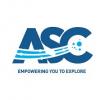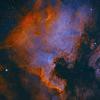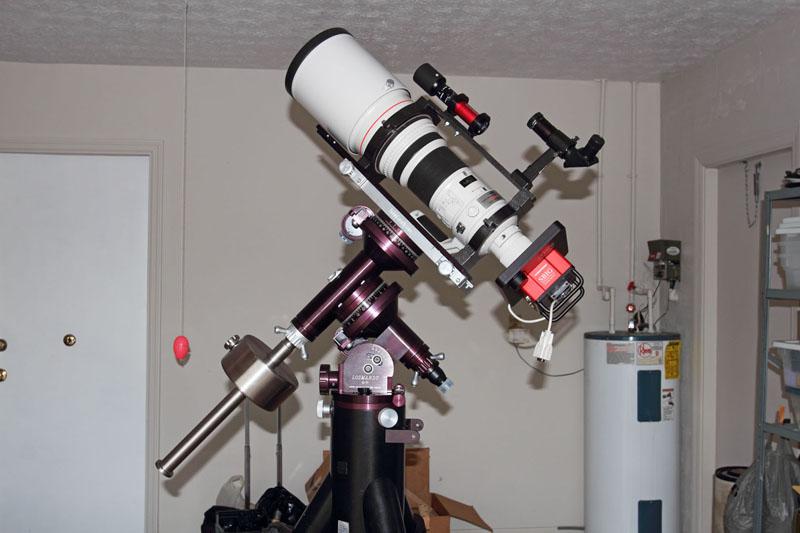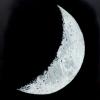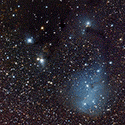
Buying a telescope...how important is the mount?
#1

Posted 23 January 2014 - 02:32 AM
Anyway, regarding the mount. I understand that the mount is an important piece of equipment, and that one needs to invest properly in a quality mount that will last over the years, and support a whole range of possible OTAs over those years. I am curious exactly how important the mount is, though. I am still debating about exactly which OTA to get...on the top of my list are the Celestron EdgeHD 11" and 14" SCTs, the Officina Stellare Hiper APO refractors, and maybe the AT10RC.
I really like what I've read about Celestron mounts. The two mounts I am interested in are the CGEM DX and the CGE Pro. There is a pretty big price gap between these two, with the Pro being more than twice as expensive. I've read a number of threads here, but I haven't really found enough information to really help me zero in on which mount I should get. I want to save money where I can, but I don't want to cut corners that shouldn't be cut. Is the Pro overkill? Is the DX more than sufficient to hold any one of the telescopes on my list? I'll probably have more than one scope at some point, and I'm wondering if the DX would be a good enough mount for all of them, if I needed to buy more than one.
Anyway, thanks for any insight!
UPDATE: Based on earlier replies, I have evolved my plans considerably. Read down the first page to find more relevant and up to date information before responding to the original post above! Thanks!
#2

Posted 23 January 2014 - 02:47 AM
Good luck with you research.
Charles
#3

Posted 23 January 2014 - 02:53 AM
#4

Posted 23 January 2014 - 03:18 AM
If you have the money for it, you could go for an ASA DDM60 or a 10Micron 1000HPS. I have not used any of these myself, but the owners of these mounts would defend them to their death from what I have read here on cloudy nights and other forums.
#5

Posted 23 January 2014 - 03:47 AM
Looking at the instruments that you pointed - except the refractors all are long focal length ones which requires better mount. I personally don't think that C11 or C14 without reducer/hyperstar will work well on cgem dx. If it is not urgent for you i would also wait several months to see the impressions from the new ioptron CEM60. Especially the EC version with high precision encoders looks very promising and it is also very light.
#6

Posted 23 January 2014 - 05:49 AM
When you say you don't think the C11 or C14 will work without a reducer or hyperstar, do you mean the C11 and C14, or EdgeHD 11 and EdgeHD 14? Or is it the same diff? And is the concern that at a longer focal length, any vibration in the assembly will show up in AP imaging? How do anti-vibration pads work? And if I use an autoguider, will that affect how well something like the EdgeHD 1100 works on the CGEM DX without converting to hyperstar or using a focal reducer?
I do have plenty of time before I actually intend to buy...probably summer at the earliest. So I'll definitely check out the iOptron CEM60, and keep an eye out for reviews. The 60lb capacity is intriguing, and their 300,000 object GOTO database sounds amazing.
---
Hilmi, thanks for the mount options! I'll have to take a look at those, see what the options are. Looking at the weight capacities of those mounts (including the CGEM DX), it brings another question to mind:
What kind of buffer for capacity do you want in a mount? If the largest tube you intend to put on the thing is 46lb, and the mount can handle 50lb (which is the case with the CGEM DX), is that enough? Or do you want more of a buffer for stability? The Mach1 GTO you mentioned is actually 1lb short on capacity, so it wouldn't be able to handle a 14" OTA. :\
The CGE Pro has the highest capacity support of any mount I've seen, including the ones you mentioned, at 90lb (41kg)...I mean, that isn't just a little bit more than any other mount, its a TON more than any other mount. The darn thing itself weighs 154lb in total (between the 'pod, computer, alt/az part and ra/dec part.) I honestly can't really see lugging that thing around all the time. I have aspirations to buy some land outside of town under darker skies, built a house, and built my own personal observatory, but that is years off in the future at the moment. I suspect something less than half the weight of the CGE Pro is more realistic for now due to the fact that I have to drive a decent ways to find dark skies.
#7

Posted 23 January 2014 - 05:59 AM
I am not saying you have to buy a top tier mount but I am saying if you do you will be a much happier man
#8

Posted 23 January 2014 - 06:28 AM
In general for astrophotography and when talking about mounts under about $4K you want to use only about one half of their rated weight capacity. Higher-end mounts like those from Astro-Physics (and some others) can probably be used closer to their stated capacity.
Celestron makes some very good goto mounts for VISUAL work, but for astrophotography at more than (let's say) 2000mm focal length anything less than the CGE Pro would be taking a risk or just asking for trouble. And unfortunately, your mileage will vary since mounts at the low to medium price point will probably show quite a bit of variability -- some samples may work and some may not. Certainly that can be true at any price (lemons happen), but I would be surprised if you could find anything at less than $4K that would be a CERTAIN success with an 11" or 14" SCT.
In any case, you might want to rethink the size or type of scope that you will buy. I think you might be happier starting off with a small to medium sized, short-focus APO refractor or a six to eight inch SCT or RC or short focus Newtonian. In fact, your 600mm Canon telephoto might be a good place to start.
If, however, you want to concentrate on high-magnification lunar and planetary photography then a C11 or C14 would be a very good system given an appropriate leaning curve (perhaps even on the CGEM DX). In fact, maybe the DX could work if you use the 600mm Canon lens for your DSOs and a C11 or C14 for visual, lunar and planetary photography (with an occasional DSO capture thrown in with the SCT).
#9

Posted 23 January 2014 - 07:09 AM
I am not saying you have to buy a top tier mount but I am saying if you do you will be a much happier man
Aye, I totally understand. Getting up to $7000 for just the mount, while again I'm not afraid to spend the money where it should be spent, is going to really stress my budget. I could get the mount this year, but that would be it. I wouldn't be able to get an actual telescope, or the autoguider, or anything else for another year...I guess I'd like to avoid that scenario if possible. I've put off astrophotography (and astronomy in general) for so long, I'm really itching to get some good equipment and start doing it this year if I can.
The difference is when an astrophysics mount says it can handle a certain load it really can handle that load. You can get AP900 second hand for around $7000 too and that has larger capacity.
So, how do you know whether a mount can actually handle it's capacity or not (how do you know if you can trust a manufacturers specifications for astrophotography purposes?) And what is the actual difference to the results? I ask, because I've seen a lot of pretty good astrophotography done with various 10-12" scopes on the CGEM DX. Maybe I just haven't seen how much better the results can be with a better mount?
Any links to images where I can compare between say a good Astro-Physics setup vs. setups similar to the CGEM DX (doesn't necessarily need to be just the DX)?
#10

Posted 23 January 2014 - 07:25 AM
You can forget the CGEM DX if you want to do medium to long exposure astrophotography with anything other than a widefield refractor or a reduced focal length, medium-sized, folded-mirror system (and that wouldn't include either your 11" or 14" SCT). I don't know about the CGE Pro, it should work but as you already know it would be an absolute "beast" to move around or to transport regularly to a remote site.
In general for astrophotography and when talking about mounts under about $4K you want to use only about one half of their rated weight capacity. Higher end mounts like those from Astro-Physics (and some others) can probably be used closer to their stated capacity.
Thanks. That was what I figured regarding actual weight vs. capacity.
Let me ask this. I don't expect I'll be doing much DSO AP work with the EdgeHD 11" at it's full focal length. One way or another, it will be focal reduced. I'll either use a focal reducer, or simply go with hyperstar and f/2 imaging. While I love the night sky, I have too many other responsibilities to be spending eight hours a night imaging an object. I intend to do what I can to reduce my exposure times, and from what I understand hyperstar f/2 can reduce hours to maybe an hour at most, and a focal reducer can reduce many hours to a couple hours.
For that kind of work, as a starting point, what would be the lowest-end Astro-Physics mount (and maybe some of those "others") that would be sufficient?
#11

Posted 23 January 2014 - 07:38 AM
Top tier manufacturers are few and well known. Their word is gold and when they state a certain load, you know they can handle it.
In the US these are:
-Astrophysics (respected worldwide)
-Software Bisque (makers of the Paramount mounts, again respected worldwide)
From Europe, you have manufacturers that are only now gaining traction internationally, but are well established in the European market. My theory is that it was a lack of internet chatter in English language which has delayed their fame.
-ASA
-10Micron (Now has US distributor)
For second level, many people have had good success with mounts like Losmandy, I am not one of those people, but I am not a representative sample. One thing I can tell you is that Scott Losmandy gives top grade customer service and many users (apart from me and a small number of others) are extremely happy with his mounts. For load carrying capacity, most people rate Losmandy mounts at around 2/3rd stated capacity.
For most other mounts almost everybody agrees that for Astrophotography, stick to half the rated load.
If you can afford one of these top tier mounts, you will be very happy and will get stellar results. With your camera lenses you can start off getting great Astro-photos and don't need to rush getting a telescope. Consider the short focal length (your 600 mm lens) as your training and initiation period. At that focal length, you will not even need an auto-guider if you stick to 5 minute subs.
What you learn from the shorter focal length is easier to learn at shorter focal lengths but is equally applicable to longer focal lengths you will get from a telescope.
Basically, I'm saying you can still get lots of amazing photos even if you can't afford a telescope till a year later.
I took this shot without autoguiding using a DSLR and camera lens on a simple camera tracking mount.

On the other hand, I have not had even half this much success with my telescope and G11 mount with an auto-guider
#12

Posted 23 January 2014 - 07:42 AM
#13

Posted 23 January 2014 - 07:48 AM
I have a Mach1.
There is absolutely no comparison (as it should be for more than four times the cost). The Mach1 weighs less than the CGEM but is so much more precise it isn't funny.
Suggest you forget about the C11 or C14 for AP. Why would you need such a long focal length? if you want to image small things then use a smaller scope with a small-pixel camera like a Starlight Xpress Trius 694. Even your 5D MkIII has fairly small pixels.
You generally want your pixel scale to be about 1 arc-second to 1.5 arc-seconds per pixel. A bit less if you're using a Bayer camera like all DSLR's. So let's say 0.7 arc-seconds per pixel. With the 5d Mk III, that's a focal length of around 2000mm. That is a C8.
You can't do hyperstar with a C8 and 5d Mk III though (the DSLR is too large and would block the front of the C8).
If you only use a C8, you can get by with an Atlas or CGEM. The CGEM + EDGE8 combination is much cheaper than buying the parts separately. I would not put anything more than the 8" on the CGEM for AP. Get the 0.7X reducer or the Optec Lepus to make it f7 which will shorten the focal length and exposure times.
I had a 9.25" on my CGEM and it was a complete pain to use.
Now the CGEM DX is sold with the 11" and 14" - but the only difference between the DX and non-DX is the beefy tripod. And the CGEM's problem is imprecision in its gears. Whether in DX form or not, it simply can't carry an 11" or 14" precisely enough for AP unless you add an adaptive-optics unit (another $2000+) because the 11" and 14" are heavier and have a longer focal length.
You know the 1/f rule for shutter speed right? same thing at work here. The bigger scopes have larger f, and are heavier, so...
Or... buy a Mach1 (or AP900) for under $7000. Forget everything else. Use your Canon 600mm as an astrograph, that lens is in the same class as a Takahashi FSQ106ED.
One thing, you buy a CGEM new, you lose $500 (1/3 of its value) when you sell it. You buy a Mach1 used, you lose pretty much nothing (except shipping) when you sell it.
Buying a Mach1 is like buying your 600/4L. Why did you buy that 4L instead of an Opteka 800mm mirror lens? they are both long teles, they can both get pictures of that bald eagle.
But how many in-focus, sharp shots would you get with the Opteka compared to your 600/4L?
People post nice images from CGEMs and other lower-end mounts all the time. Just as the guy with the Opteka will occasionally show a fantastic photo of a bird in flight.
#14

Posted 23 January 2014 - 08:21 AM
For $400, given that it's a ritchey-chretien, I think I could settle for that in the interim, get a real hang of astrophotography, THEN put more money into a better tube. I also am evolving my plan because of what Hilmi said here:
If you can afford one of these top tier mounts, you will be very happy and will get stellar results. With your camera lenses you can start off getting great Astro-photos and don't need to rush getting a telescope. Consider the short focal length (your 600 mm lens) as your training and initiation period. At that focal length, you will not even need an auto-guider if you stick to 5 minute subs.
What you learn from the shorter focal length is easier to learn at shorter focal lengths but is equally applicable to longer focal lengths you will get from a telescope.
Basically, I'm saying you can still get lots of amazing photos even if you can't afford a telescope till a year later.
I took this shot without autoguiding using a DSLR and camera lens on a simple camera tracking mount.
[image]http://astrob.in/71130/0/rawthumb/gallery/get.jpg[/image]
On the other hand, I have not had even half this much success with my telescope and G11 mount with an auto-guider
And what orlyandico said here:
Or... buy a Mach1 (or AP900) for under $7000. Forget everything else. Use your Canon 600mm as an astrograph, that lens is in the same class as a Takahashi FSQ106ED.
One thing, you buy a CGEM new, you lose $500 (1/3 of its value) when you sell it. You buy a Mach1 used, you lose pretty much nothing (except shipping) when you sell it.
Buying a Mach1 is like buying your 600/4L. Why did you buy that 4L instead of an Opteka 800mm mirror lens? that's the comparison to a CGEM.
I have thought of using the 600mm camera lens as an apo refractor. Actually, I have used it a telescope a few times...just with excessively short exposures and some stacking. The results are ok, but I really need a tracking mount to take full advantage of it. Here is what I was able to do with no tracking at all on a very windy night:
[image]http://jonrista.files.wordpress.com/2014/01/orion-nebula-dark-skies.jpg?w=1140[/image]
I just wasn't sure if that was possible, but the sample image you linked is pretty awesome! I am sure I will have questions about polar-aligning it once it's on a mount, but if I CAN use it as a refractor at the start, then I'm HAPPY to do so! It would get me that much more value for the near thirteen grand I spent on it!
I also think the $400 AT6RC will be more than sufficient for a longer focal length OTA until I can afford something better. In the longer term, it seems like an AT12RC would be a great OTA. It indicates that the mirrors are fixed, and that a focuser is an OPTIONAL piece of equipment...I haven't found that piece of equipment anywhere yet, so I don't know how much it would add to the cost, if it is even necessary for AP imaging. I couldn't find anything about hyperstar with Astro-Tech's RC tubes...I very much like the idea of hyperstar/fastar, and would ultimately prefer something that can widen the field and do f/2 imaging, even if it requires more maintenance to keep the mirrors aligned and collimated.
-----
The big question now is exactly what mount to get. The Astro-Physics 1100GTO supports 110lb, lists for $8800. That is still a bit pricey, but it seems to be the cheapest one they have available that can handle larger tubes (such as if I eventually purchase something like the EdgeHD 14" or maybe even the Astr-Tech 12" or 16" RC Truss that apparently just started going on sale). The AP1100GTO has two additional options, the AE and AEL. These use their "absolute encoders" that apparently support extremely high precision for unguided astrophotography. They also seem to double the price if you order them pre-installed at the factory. Supposedly the absolute encoder will be available as a self-install addon package as well, however no idea how much that costs as they aren't shipping it yet.
Would an AP1100GTO without the absolute encoders work with autoguiders? Would an autoguider still be more precise than their absolute encoders? (I figure an autoguider would still be vastly more cost effective, given that the encoders are almost another eight grand in and of themselves...not sure I could justify that regardless.)
#15

Posted 23 January 2014 - 08:26 AM
The store you are buying from should be able to help you configure it according to your needs. You don't have to buy so many counter weights now if you have only a DSLR, you can buy those in the future as you upgrade to heavier gear. This is especially true if you are living in the USA where there is no significant savings in shipping cost if you buy it all at once. If the seller you are buying from can't advice you on a configuration, walk away and go buy from somebody else or directly from Astro-physics.
Please note there is a waiting list of a few months on most of their mounts.
#16

Posted 23 January 2014 - 08:31 AM
Unless you have a really dark site you are going to reach sky-fog pretty quickly with an f/2 system. Going narrow band would help and with shorter exposures the mount becomes less of an issue. However, at f/2 the 11" EdgeHD would result in only about 550mm of effective focal length which is a little short for most galaxies and smaller nebulae. However, I'm pretty sure the Mach1 GTO would work well at f/7 or with whatever other reducer you might select.
In any case, if you go Astro-Physics I hope you are a fairly young person, since otherwise you might not live long enough to actually find one. If you are lucky you might be able to get one of their smaller mounts in 2014, but I wouldn't count on it unless you put your money down soon or just happen to find a used unit for sale when you're ready.
As for the CGEM DX, yes you'll find some nice photos that have been taken on that and even lesser mounts. The question then becomes how often will you be able to reproduce those results (night after night) and what is the likelihood of you actually getting a sample that will perform as well as the one that produced that photo. You can take your chances, be ready to suffer some aggravation, and hope for the best and maybe succeed. I think there are probably only two ways to guarantee success, either you keep the focal length and weight down to something pretty low or you invest in a high-end mount.
#17

Posted 23 January 2014 - 08:34 AM
Don't be fooled by that price tag. That price is without tripod/pier or counterweights or many other little things you might need. The reason they sell it that way is so that you can buy only the bits you need according to your requirements and or taste.
The store you are buying from should be able to help you configure it according to your needs. You don't have to buy so many counter weights now if you have only a DSLR, you can buy those in the future as you upgrade to heavier gear. This is especially true if you are living in the USA where there is no significant savings in shipping cost if you buy it all at once. If the seller you are buying from can't advice you on a configuration, walk away and go buy from somebody else or directly from Astro-physics.
Please note there is a waiting list of a few months on most of their mounts.
Hmm, just the mount, eh? I think the 1100 is out of my price range. What's the 900 cost, used, with all the necessary bits and pieces (pod, mount, counterweights, and the computerized control system and guide ports)?
#18

Posted 23 January 2014 - 08:38 AM
#20

Posted 23 January 2014 - 08:47 AM
I never tried that particular lens, but my 70-200 F2.8 L still has chromatic aberrations even at F5. If you split the 3 channels you find the blue channel stars twice as big as the other channels. My 8" RC on the other hand gives tight stars in all colors, although it is very slow in comparison. It also has more pleasing diffraction pattern.
#21

Posted 23 January 2014 - 08:47 AM
If you used the Hyperstar system and kept the remainder of the weight as low as possible I'd think that a Mach1 GTO would be more than fine with a C11. Don't know about the C14, that might be pushing it.
It seems like it would. Looked up the weight of the C11, it is 28lb (13kg) and the Mach1 supports 45lb (20kg). That should leave enough room for a finder scope, astrocam/DSLR, and all the necessary guiding and cabling aparatus, right?
I am basically writing off the C14. I think it will be an EdgeHD 11" or maybe an AT12RC (depends on whether the Astro-Tech works with hyperstar or not.)
The Mach1 should be more than enough with my 600mm lens. That puppy, thanks to multiple fluorite elements and light weight barrel materials, only weighs 8.3lb. The camera is only a couple pounds more.
Unless you have a really dark site you are going to reach sky-fog pretty quickly with an f/2 system. Going narrow band would help and with shorter exposures the mount becomes less of an issue. However, at f/2 the 11" EdgeHD would result in only about 550mm of effective focal length which is a little short for most galaxies and smaller nebulae. However, I'm pretty sure the Mach1 GTO would work well at f/7 or with whatever other reducer you might select.
I plan to image every DSO there is in the long run...so large nebula that span wide fields, as well as smaller nebula, and maybe even small regions of larger nebula (like M42). I also plan to get a proper CCD with dual-stage TEC and built-in guiding and all that in the long run as well, so the camera won't be as heavy as the 5D III in the end, I think.
In any case, if you go Astro-Physics I hope you are a fairly young person, since otherwise you might not live long enough to actually find one. If you are lucky you might be able to get one of their smaller mounts in 2014, but I wouldn't count on it unless you put your money down soon or just happen to find a used unit for sale when you're ready.
Well, I'm 34. Not exactly young, but not old either. ;P When you say "smaller mounts", does the Mach1 qualify?
As for the CGEM DX, yes you'll find some nice photos that have been taken on that and even lesser mounts. The question then becomes how often will you be able to reproduce those results (night after night) and what is the likelihood of you actually getting a sample that will perform as well as the one that produced that photo. You can take your chances, be ready to suffer some aggravation, and hope for the best and maybe succeed. I think there are probably only two ways to guarantee success, either you keep the focal length and weight down to something pretty low or you invest in a high-end mount.
Yeah, based on what everyone here, including yourself, has said, I'm pretty much writing off the CGEM DX. It sounds like it just isn't up to snuff, and while I am basically diving in head first here with my first telescope, I really do intend to be serious about astrophotography. I'm the kind of person who likes to invest in what will do the job, do it well, and last for decades. (Hence the EF 600mm f/4 L IS II...)
It sounds like Astro-Physics is the place to go for that kind of quality. That said, if I am UNABLE to find an Astro-Physics mount in a reasonable time frame, what would be the next best thing? Someone mentioned the iOptron CEM60 earlier. That sounds like an interesting mount, and it also seems to have an enhanced encoder for high precision tracking. It doesn't seem like it is available yet, but would that be a mount of similar quality? Or are we talking about something of a lesser order than Astro-Physics?
#22

Posted 23 January 2014 - 08:49 AM
Part of this is because I just found the Astro-Tech 6" f/9 RC Astrograph
Why would you mess with that, when you already have this?
OOH! How in the world did you get an SBIG mounted on there!? SBIG cams are on the top of my list once I get the mount and scope. If I can mount an SBIG right to the 600mm f/4, wow, I'd be one ecstatically happy dude!
#23

Posted 23 January 2014 - 08:52 AM
Terry,
I never tried that particular lens, but my 70-200 F2.8 L still has chromatic aberrations even at F5. If you split the 3 channels you find the blue channel stars twice as big as the other channels. My 8" RC on the other hand gives tight stars in all colors, although it is very slow in comparison. It also has more pleasing diffraction pattern.
CA on the Canon EF 600mm f/4 Mark II's is VERY low. They use both UD (same thing as ED) glass as well as two Fluorite elements. Aberrations are very low. Maybe not quite as low as a quadruplet apochromat like the Takahashi, but still about as low as you are going to find in a DSLR lens. The low aberrations at maximum aperture and the weight were the two reasons why I spent the dough on the new Mark II, instead of picking up the older 600mm f/4 Mark I for half the price (and almost four more pounds of weight.)
#24

Posted 23 January 2014 - 08:52 AM
#25

Posted 23 January 2014 - 08:54 AM
Paramount MX should be your plan B at the budget you indicated if you have to have new.
Paramount MX...going to look that up now. I don't have to have new...I am actually thinking the 900GTO might be exactly what I need, if I can find a whole package deal used from someone.
BTW, does anyone know how many objects the Astro-Physics controller has? And, for that matter, how many of those objects are really the things you would be interested in observing and imaging anyway? I've seen counts from 20,000 to 40,000 to 300,000+...does it matter if you have more than 20,000 pre-programmed objects?




